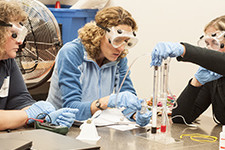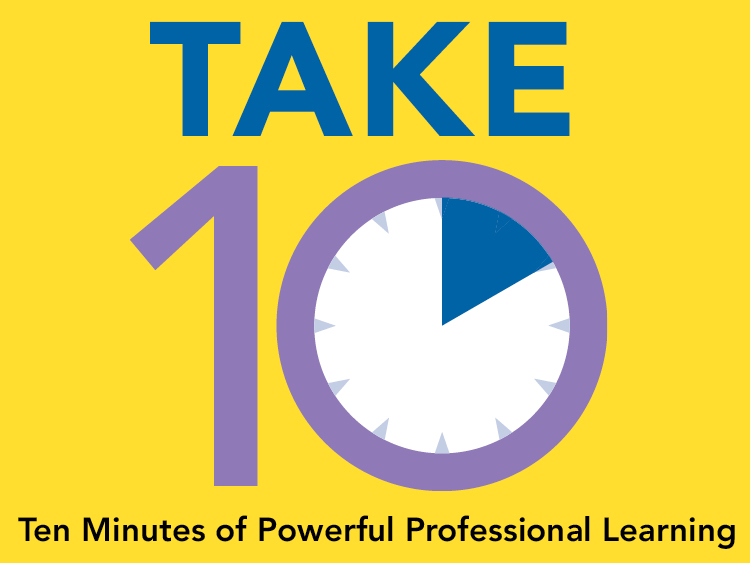So, you want to shift your classroom to be more student-centered. Research shows that inquiry learning, a more student-centered approach to instruction, has many positive benefits across subject areas. While the payoffs may be plentiful, this change doesn’t happen overnight; students and teachers have to adapt to a new way of existing in the classroom. This raises many questions: Where do you start? How will your students react? How can we give control to students without losing control of the classroom? If moving away from a traditional teaching approach is something that interests you, take a moment to read some of the tips I’ve compiled to help you get started!
Figuring out vs. confirming
In order to create an environment that supports authentic learning with students in the driver’s seat, it is important to allow them to discover on their own. This can be challenging! Watching students stumble, confront misconceptions, and learn from mistakes is never easy. The more straightforward, but less impactful, approach is to tell students the “answer” then simply have them confirm that answer through experimentation. When this more straightforward approach is taken, however, we miss important learning opportunities that involve problem solving, risk taking, teamwork, and many other skills. When students correct their own misconceptions, the learning is more impactful and long lasting. Whenever possible, give students the chance to figure out a puzzling phenomenon, answer a tough question, solve a challenging problem, and/or apply their learning in a new scenario. Use these resources for ideas on how to have students figure out explanations to puzzling scientific phenomena!
Increase the talk (yes, it may get loud!)
Talk and language development are skills that will serve students well beyond the science classroom. Using an inquiry approach opens the door for more opportunities for students to work together, ask questions, share ideas, argue (scientifically and backed by evidence, of course!), and develop explanations. Building this skill can be challenging and students will likely need a lot of support along the way. Talking about science is a lot like learning a new language; it takes time, practice, and many opportunities for reflection. Build lessons that intentionally focus on talk. You may have students practice writing investigable questions, or prepare to share and discuss the data they collected during a group investigation. For helpful tools and examples of talk in the science classroom, visit The Inquiry Project website. There you will find (almost!) everything you need to get started with inquiry-based talk.
Build relationships
A classroom environment built on trust and risk-taking is an important piece to the puzzle. In order for students to take control of their learning, they must feel empowered to share ideas and questions and challenge one another. This relationship building must occur between students as well as between students and teachers. Try to create a culture where risk taking is not only accepted, it is expected. Validate student ideas as much as possible, and let everyone know that it is ok to be wrong. Learning is a process in which we have to constantly evaluate what we think we know in light of new information – and it should occur beyond the four walls of your classroom! Being comfortable being wrong is a life skill that is needed now more than ever. There is no “one-size-fits-all” approach to building relationships in your classroom, so start now and be prepared to continue working at it for the long haul. One place to start, is establishing norms within your classroom. Check out this resource for ideas.
Increase formative assessment
When we make a shift in instruction, we have to be ready to make a shift in assessment. If we let students show us what they know through inquiry-based teaching and learning, we allow many opportunities to formatively assess their thinking. Formative assessment is a powerful tool you can use to guide students through the learning process while still leaving them with a sense of control. If we know where we want students to be with their learning, and we collect evidence to see where they currently are, we can provide useful feedback to help them reflect and, in turn, design activities that will meet them at the correct level. Don’t underestimate the importance of formatively assessing students throughout the inquiry process at every grade level – it is one of the most important tools in your toolbox. For more information on the power of formative assessment in an inquiry classroom check out “Enhancing Inquiry through Formative Assessment” by Wynne Harlen. This (relatively) short reading can build a strong foundation for you and may be used to spark further discussion in your professional learning community.
Change the way you plan
An inquiry classroom starts with purposeful planning. The days of “make and take” lessons found on the internet or pulled from an existing curriculum (yes, even an inquiry-based curriculum!) are over. In order to be successful with creating a student-centered environment, lessons have to, at the very least, be modified in order to be responsive to students’ needs and questions. The term “student-centered” may cause some educators to picture a noisy, chaotic classroom with little to no control over what is happening, one with no solid plan in place. However, the contrary is true. Planning is the foundation of all successful classrooms, especially those that are inquiry-based. Plan with your standards in mind and be sure you know what you want your students to know, ask, and be able to do, all while letting them create their own pathway to get there. It may be helpful to use the 5E model or a backwards design approach while planning, especially when designing a lesson from the ground up.
Consider the shift for students, too
While we often spend most of our time focusing on strategies for shifting our own learning and instruction, it is important to remember that all of these changes require students to modify their approach to school, too. Students are usually not used to being given control over the questions they ask, the investigations they design, or even the way they communicate. This presents a huge learning curve for them, and may cause some bumps in the road at the early stages of implementation. Remember, if things don’t go perfectly the first time, it is ok! You can model what it means to take risks, change your thinking, and have a growth mindset. Modeling these behaviors will more than likely have a positive impact on students. Cut yourself and your students some slack, allow the chance for failure, learn from mistakes, and be ready for a huge payoff!
For more information on student-centered teaching and learning that aligns with the NGSS, check out the Mandell Academy’s professional learning opportunities here: https://ctsciencecenter.org/education/ We offer a variety of in-person and virtual workshops that will help get you started with shifting your instruction as well as provide continued support and learning opportunities.
You may also want to read this Edutopia article: “Embracing Inquiry Based Instruction” and download a free PDF of some early research from the National Academies Press that helped educators better understand the power of inquiry teaching and learning.
Happy inquiring!
This blog was made possible in part by the Institute of Museum and Library Services.

Rachel Shurick is a Professional Learning Specialist at the Connecticut Science Center’s Mandell Academy for Teachers. Rachel’s background is in Marine Science and informal education. Rachel supports educators to deepen their understanding of instructional shifts associated with NGSS and inquiry-based teaching and learning. Rachel has also worked to develop workshops aimed to help teachers bring the Next Generation Science Standards to life in their classrooms.


